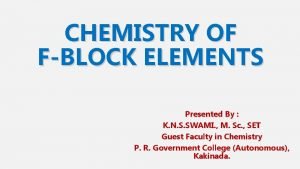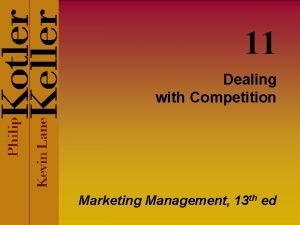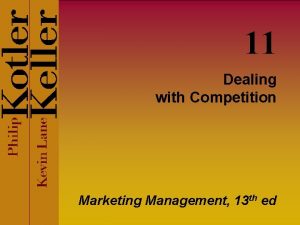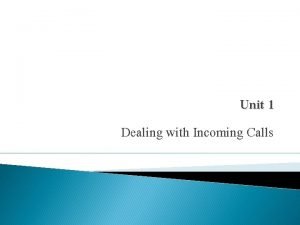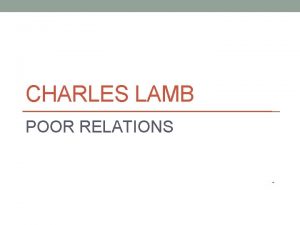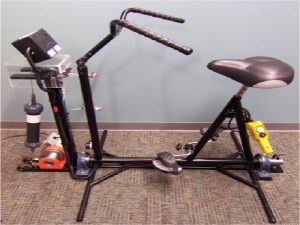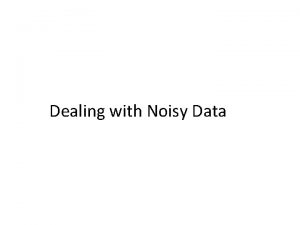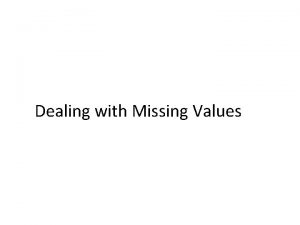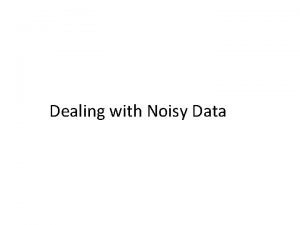Dealing with poor motivation Poor motivation can have













- Slides: 13

Dealing with poor motivation Poor motivation can have a significant effect on a firms ability to be profitable, efficient and to sustain its own performance. There a number of potential causes: • • • Pay rates Security Prospects of promotion/advancement and improvement in living standards Social grouping Style and quality of leadership The nature of the work The sense of challenge in relation to the workers ability Desire for autonomy and responsibility Working conditions

Performance appraisal A process whereby an individual’s performance is reviewed against previously determined and agreed goals, and were new goals are agreed that will develop the individual and improve performance over the forthcoming period.

Reasons for developing an appraisal scheme Improve performance Provide feedback on performance Increase motivation Identify potential Identify training needs Aid career development Award salary increases Solve job problems Let individuals know what is expected of them Clarify job objectives Provide information about the effectiveness of the selection process. • Provide information for HR planning • • •

Typical appraisal scheme will include. Identification of criteria for assessment Preparation of report by the manager Appraisal interview Review of the assessment by the assessors own superior • Preparation and implementation of action plans to achieve changes agreed • Follow up monitoring the progress of the action plan • •

Job design – the application of motivational theories to structure the work so as to improve productivity and the sense of satisfaction. A well designed job will – • • • Use the skills and abilities of the individual to their full potential Be reasonably challenging Provide some variety Be considered worth while and meaningful by employees. Provide some degree of autonomy Provide opportunities for working as a team.

Job Rotation This involves the systematic and planned movement of employees from one job to another to provide them with variety and stimulation. In itself job rotation provides some enrichment to work.

Job enlargement This involves a re-design of the job so that a series of tasks is combined into a new, broader job that gives variety and challenge to employees. By increasing the scope of the job the employee should be motivated. However, job enlargement Should not result in over-burdening the worker.

Job enrichment Defined as a job design that incorporates achievement, recognition and other high level motivators. In essence it means job satisfaction as a result of greater autonomy and participation in the decision making process.

Dealing with demotivated workers A demotivated worker may show the following signs. • Absenteeism • Low productivity • Low quality work • obstructiveness

Motivating the poor performer Examples of poor performance Absenteeism Time-wasting Missing deadlines Resisting change Bad timekeeping Upsetting customers Lack of commitment Output low in quality and/or quantity Withholding information Causes of poor performance Solutions Lack of job knowledge Lack of skills Stress Health problems Inadequate training Poor working conditions Family problems Poor management Cultural differences Group pressure Preventing the problem: Recruitment and selection Probationary period Advice, support, guidance and training Review meetings Realistic targets Managing the problem: Early identification Meetings Targets Regular reviews Monitoring and support Disciplinary procedures as a last resort Formal warnings and if not heeded dismissal

Disciplinary action is likely to be initiated by management in one of the following situations. • Poor performance (failure to work, work to an accepted standard or negligence. ) • Misconduct (failure to obey reasonable orders, unacceptable behaviour, bad time-keeping or infringement of rules) • Gross misconduct (falsifying claims, malicious damage to employers property, sexual misconduct. )

Grievance Procedures A grievance process is a system which allows an employee to complain about the way they are treated and generally covers. • • • Supervision Discrimination Bullying Sexual harassment Health and safety Excessive workload

Principal incremental stages of a disciplinary procedure. Nature of the disciplinary matter and procedural stage Misconduct that is not serious More serious misconduct or repeated misconduct for which an oral warning has already been given. Serious misconduct or repeated misconduct for which a written warning has been given Gross misconduct for which final written warning has been given Management response and action Oral warning Level of management administering procedure Team leader /supervisor Written warning Supervisor or line manager Final written warning/and or action short of dismissal Line manager and/or senior manager Dismissal or action short of dismissal such as transfer, demotion or suspension Senior manager
 6 square faces 8 vertices 12 edges
6 square faces 8 vertices 12 edges Actinide contraction
Actinide contraction Branch of linguistics dealing with meaning
Branch of linguistics dealing with meaning Branch of biology dealing with interactions among organisms
Branch of biology dealing with interactions among organisms Section 2 dealing with other nations
Section 2 dealing with other nations Contact center stress
Contact center stress How do marketers identify primary competitors
How do marketers identify primary competitors Is a genre of speculative fiction
Is a genre of speculative fiction Chapter 5 lesson 1 dealing with anxiety and depression
Chapter 5 lesson 1 dealing with anxiety and depression Chapter 5 lesson 1 dealing with anxiety and depression
Chapter 5 lesson 1 dealing with anxiety and depression Dealing with competition marketing management
Dealing with competition marketing management Unit 1 dealing with incoming calls
Unit 1 dealing with incoming calls Dealing with anger bible
Dealing with anger bible Dealing successfully with difficult changes in your life
Dealing successfully with difficult changes in your life

